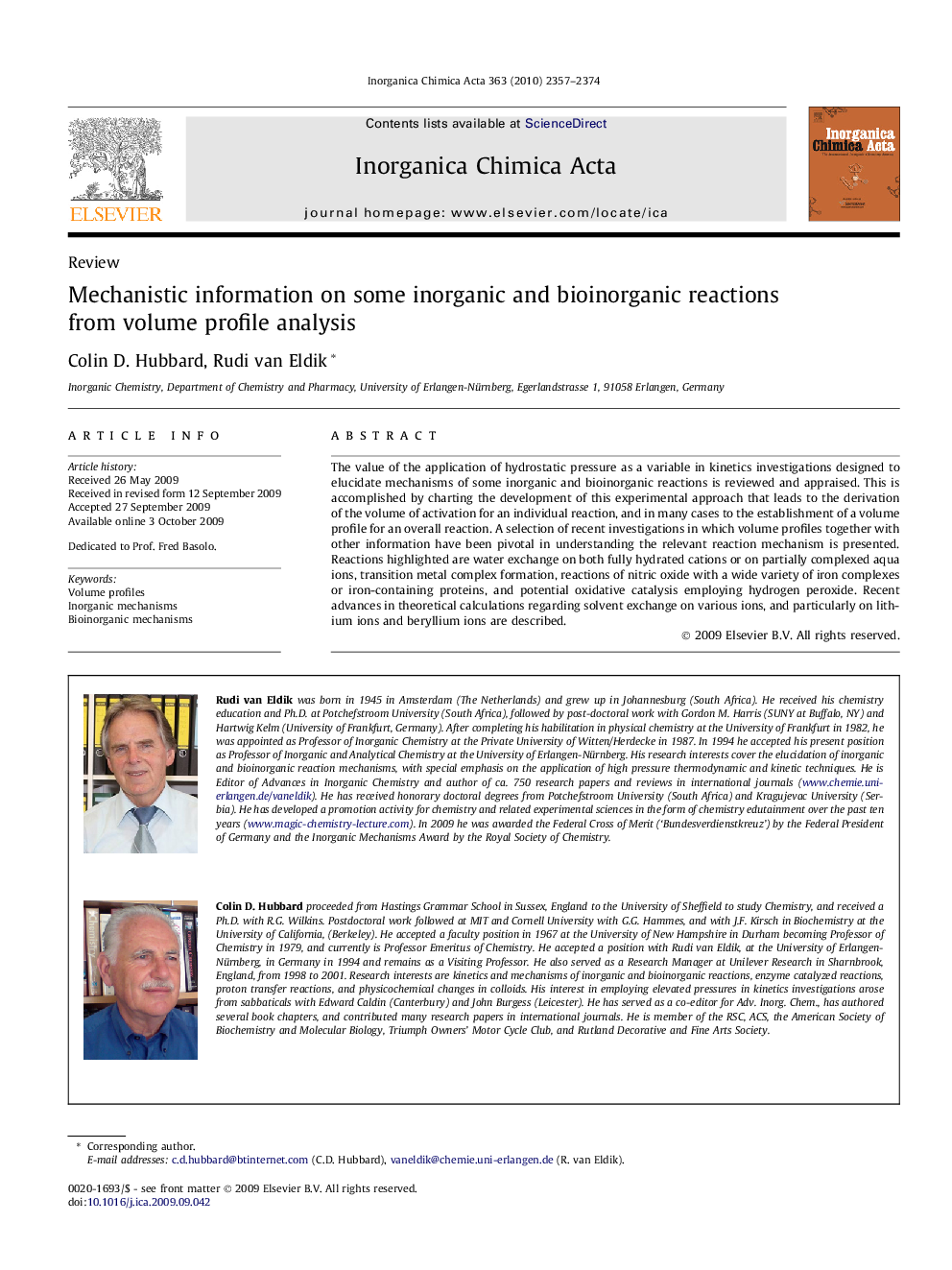| Article ID | Journal | Published Year | Pages | File Type |
|---|---|---|---|---|
| 1307991 | Inorganica Chimica Acta | 2010 | 18 Pages |
The value of the application of hydrostatic pressure as a variable in kinetics investigations designed to elucidate mechanisms of some inorganic and bioinorganic reactions is reviewed and appraised. This is accomplished by charting the development of this experimental approach that leads to the derivation of the volume of activation for an individual reaction, and in many cases to the establishment of a volume profile for an overall reaction. A selection of recent investigations in which volume profiles together with other information have been pivotal in understanding the relevant reaction mechanism is presented. Reactions highlighted are water exchange on both fully hydrated cations or on partially complexed aqua ions, transition metal complex formation, reactions of nitric oxide with a wide variety of iron complexes or iron-containing proteins, and potential oxidative catalysis employing hydrogen peroxide. Recent advances in theoretical calculations regarding solvent exchange on various ions, and particularly on lithium ions and beryllium ions are described.
Graphical abstractThis dedicated review covers recent work on the elucidation of inorganic and bioinorganic reactions mechanisms on the basis of volume profile analysis. Such profiles are obtained from high pressure thermodynamic and kinetic measurements and represent the reaction progress on the basis of partial molar volume changes. Volume profiles for typical solvent exchange, ligand substitution, and the activation of small molecules, are presented.Figure optionsDownload full-size imageDownload as PowerPoint slide
